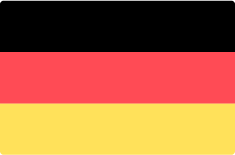The strength of the retroreflection (reflective performance) depends, among other things, on the two factors observation angle and illumination angle. The manufacturers of reflective films specify these values in their technical data sheets so that the individual films and their variants can be better compared with each other.
The following image shows the two factors observation angle α and illumination angle β:

For better comparability of reflectance values, it is usually assumed that the distance between the vehicle and the traffic sign is 30 metres. This is important to know, as the size of the two angles depends on the distance: The greater the distance, the smaller the angles.
What is the observation angle α?
The observation angle α indicates the distance between the light source and the light receiver. In the case of a car, this would be the headlights and the driver's eyes.
To standardise calculations, a distance of approx. 1 m is assumed for standard cars. At a standard distance of 30 metres from the traffic sign, this angle corresponds to approx. 0.33°.
For lorries, a standard observation angle of 1.5° applies, as the distance between the driver's eyes and the headlights is farther.
What is the illumination angle β?
The illumination angle β is also often referred to as the entrance angle. As DIN 67520, the german standard for retroreflective materials for traffic safety, uses the term illumination angle, we will also restrict ourselves to this term.
The illumination angle indicates the distance between the vertical optical axis of the traffic sign and the light source (headlights). The optical axis runs perpendicular to the reflective material (in this case the traffic sign).
How do the two angles influence the reflectance value?
The following applies to both the observation angle and the illumination angle: the greater the angle, the lower the retroreflection value.
This means that if the retroreflective traffic sign is at the driver's eye level, the reflection is stronger than if the sign is positioned overhead.




